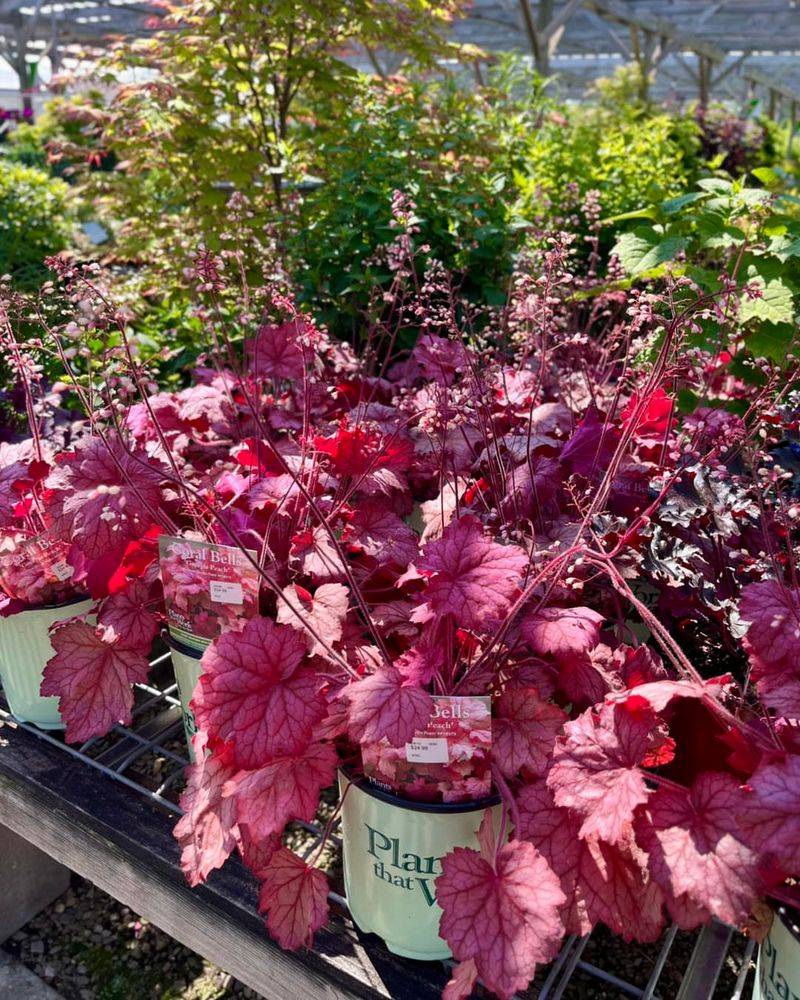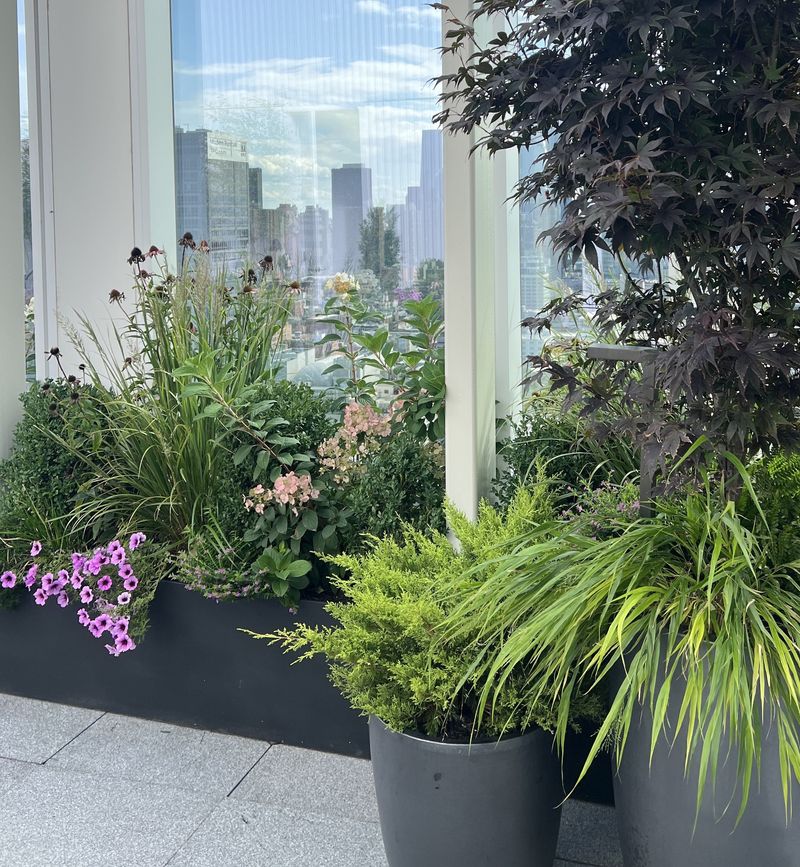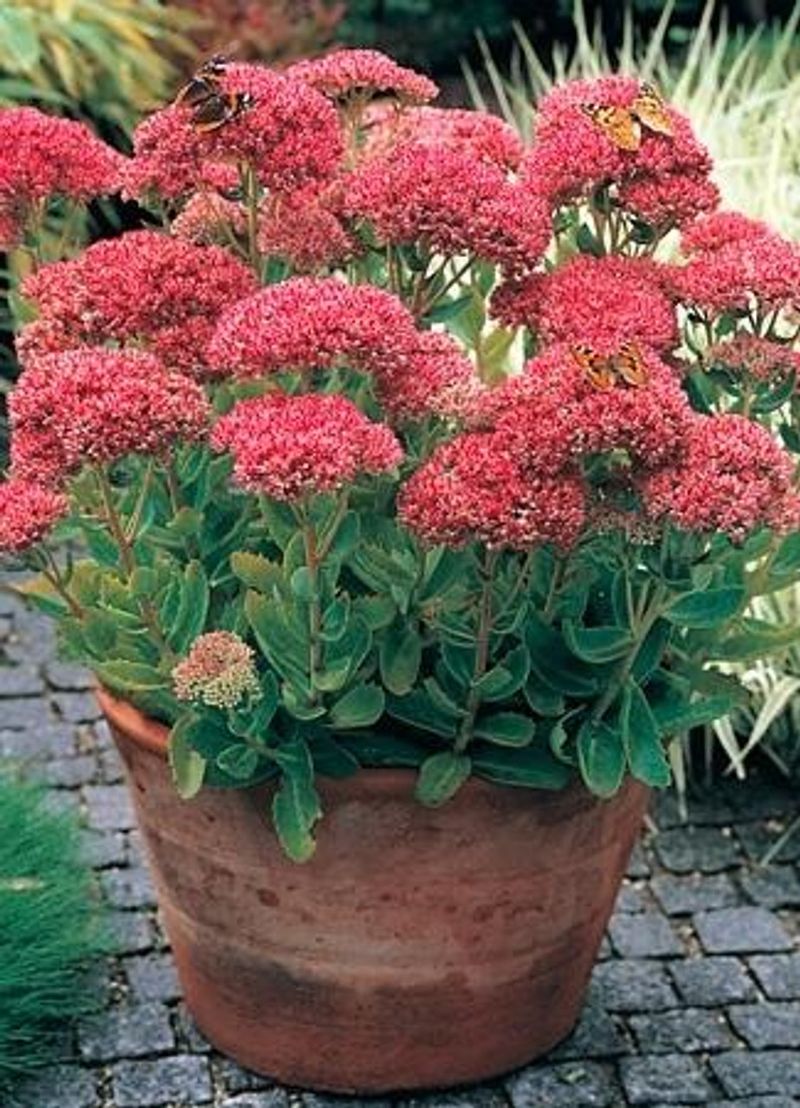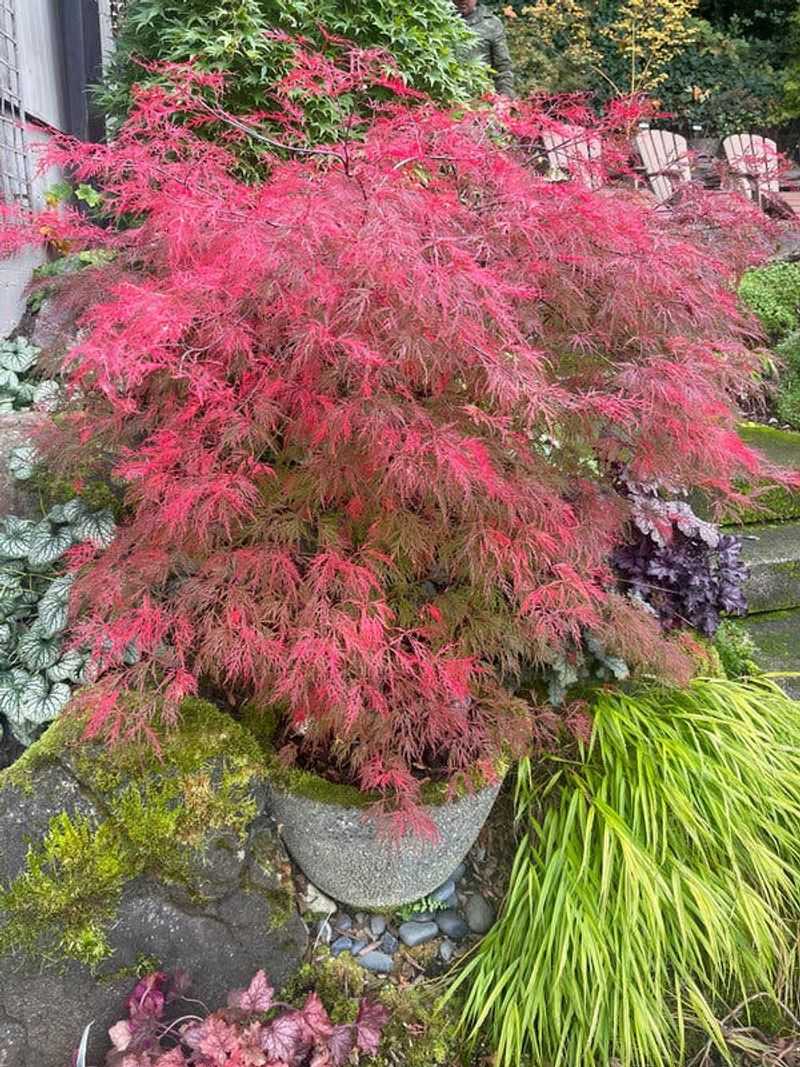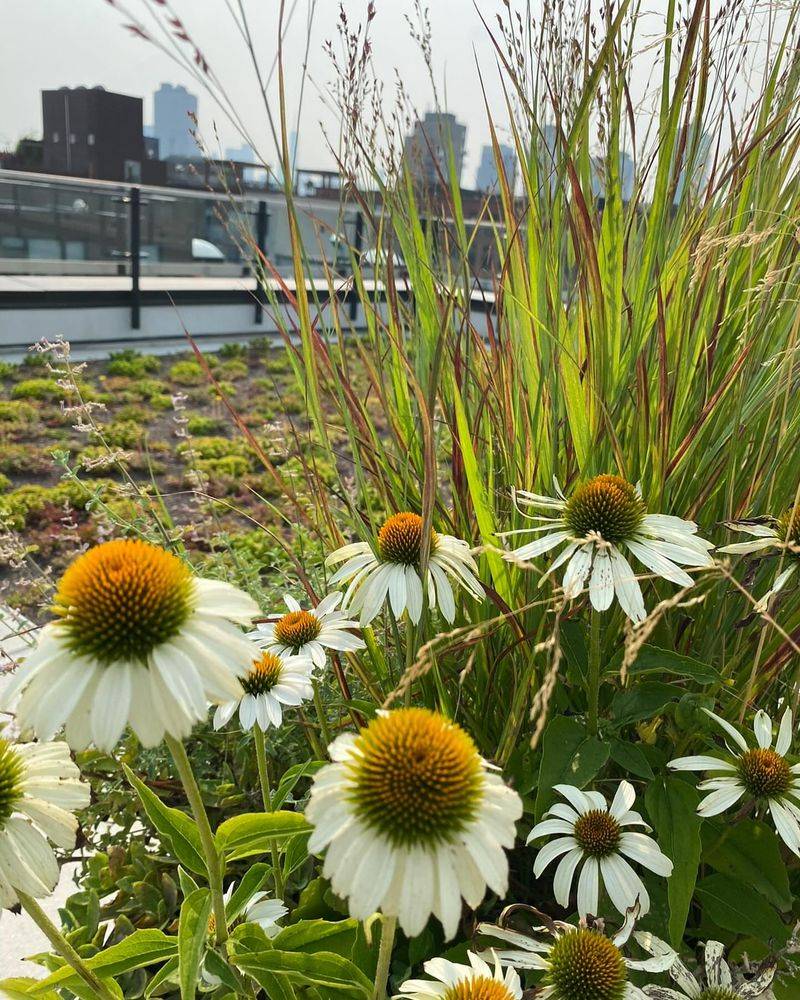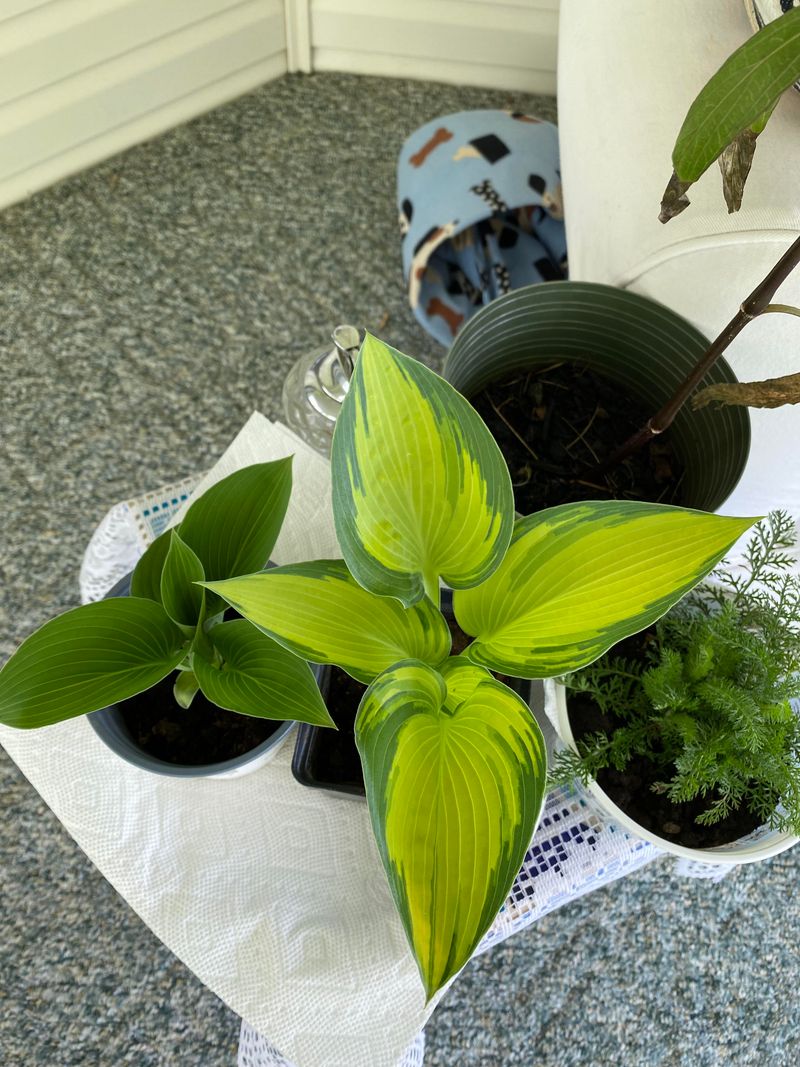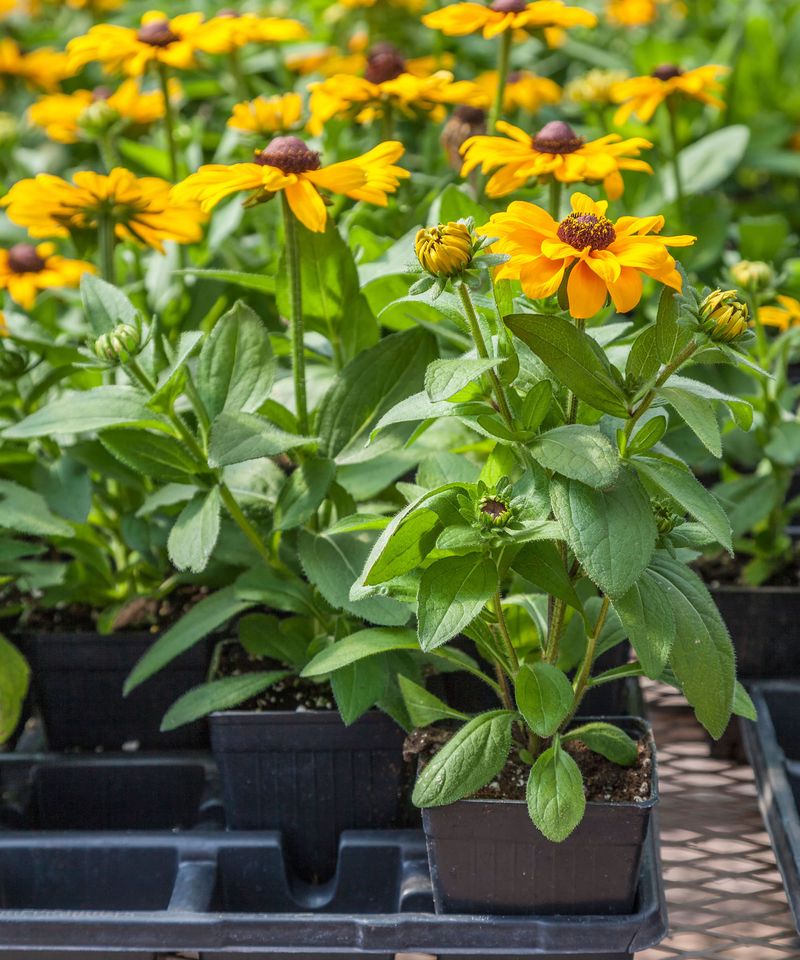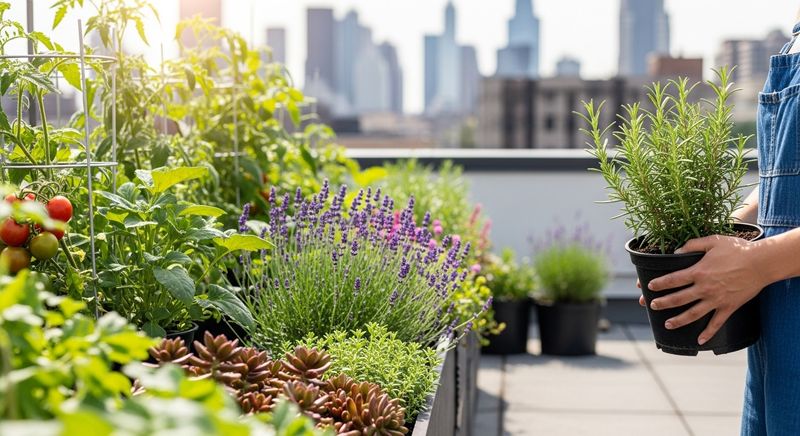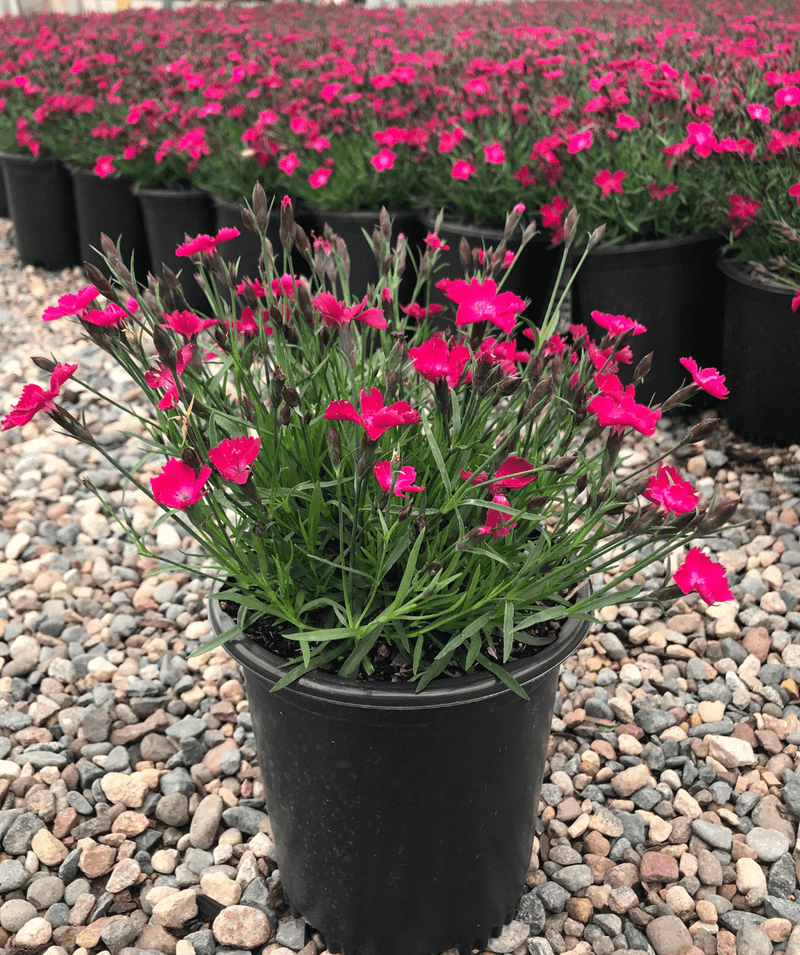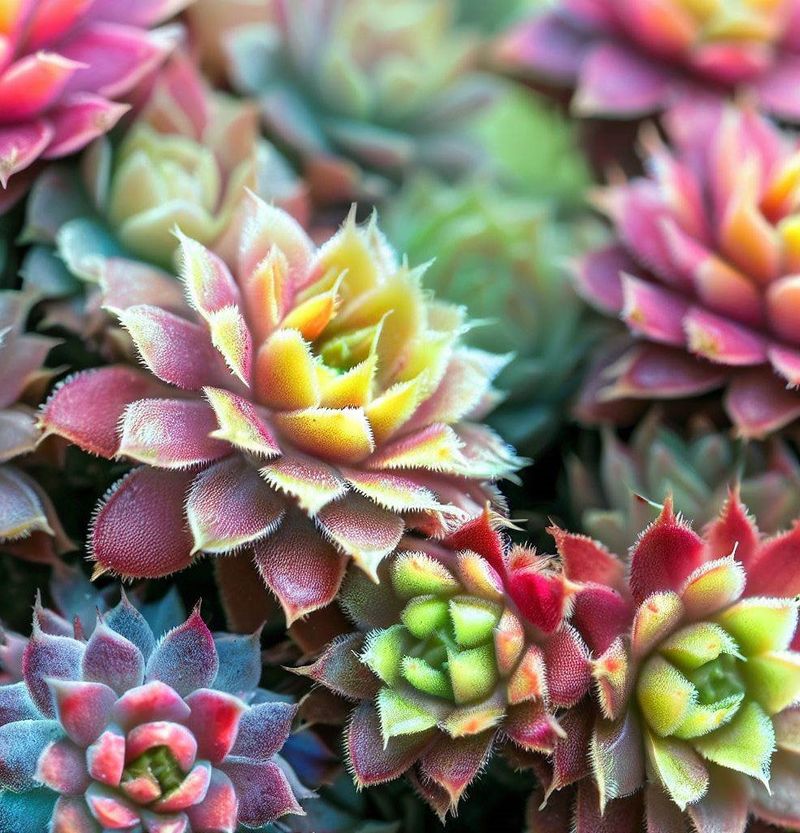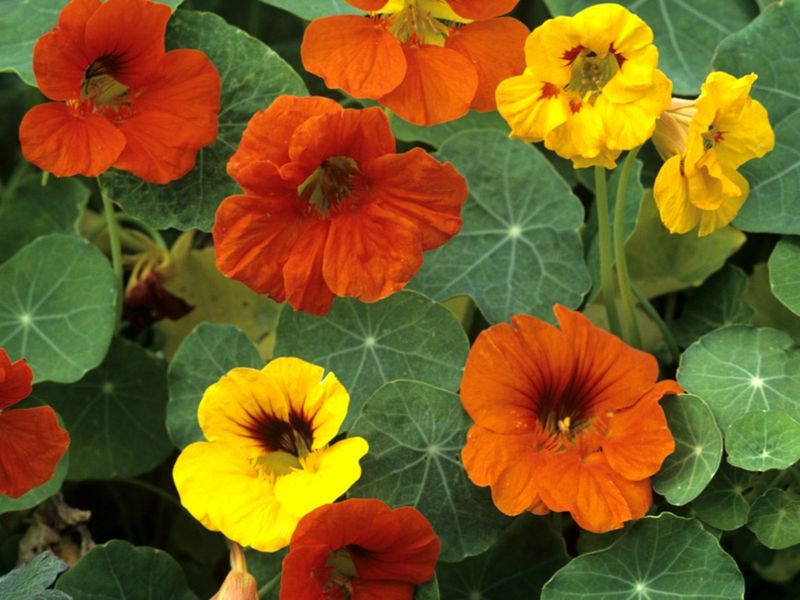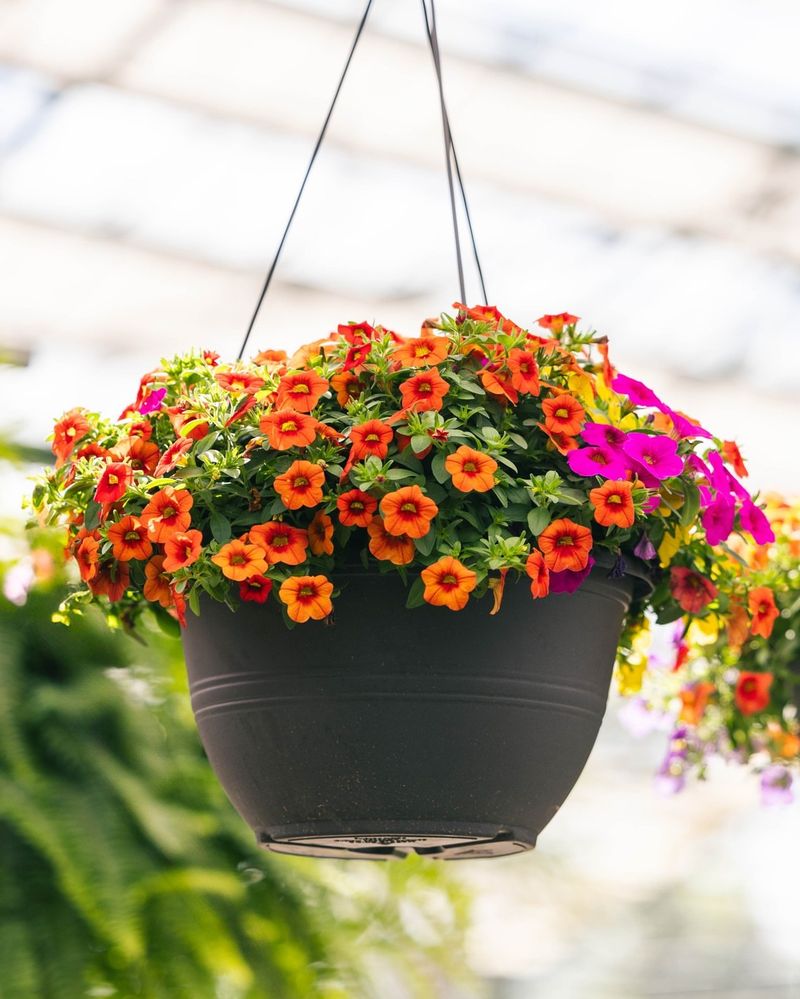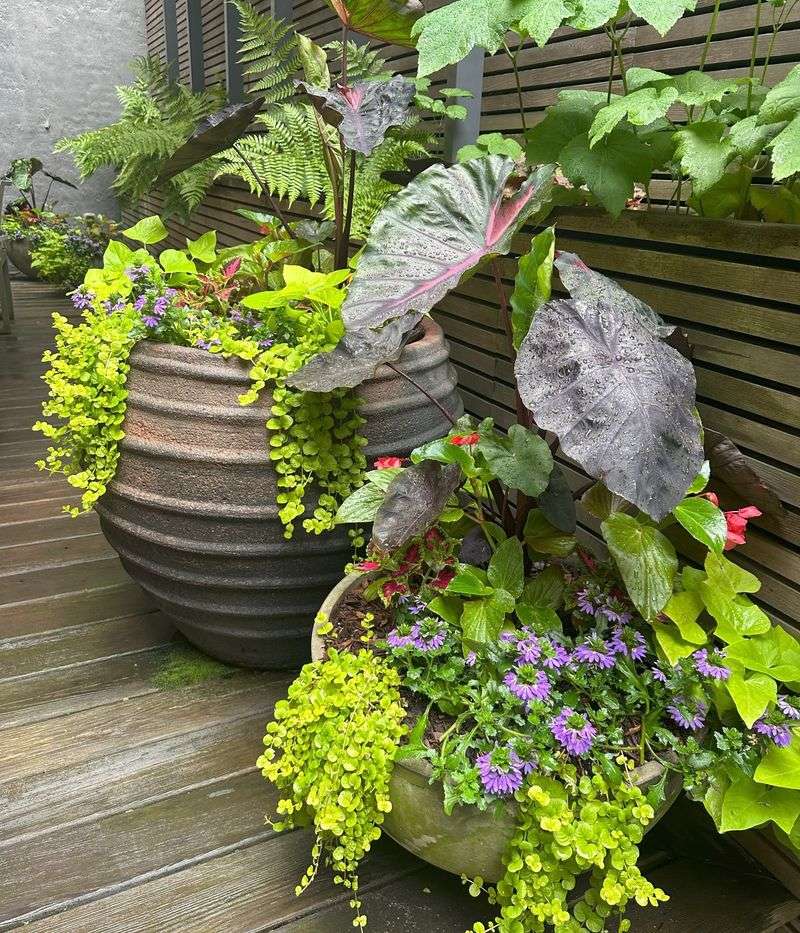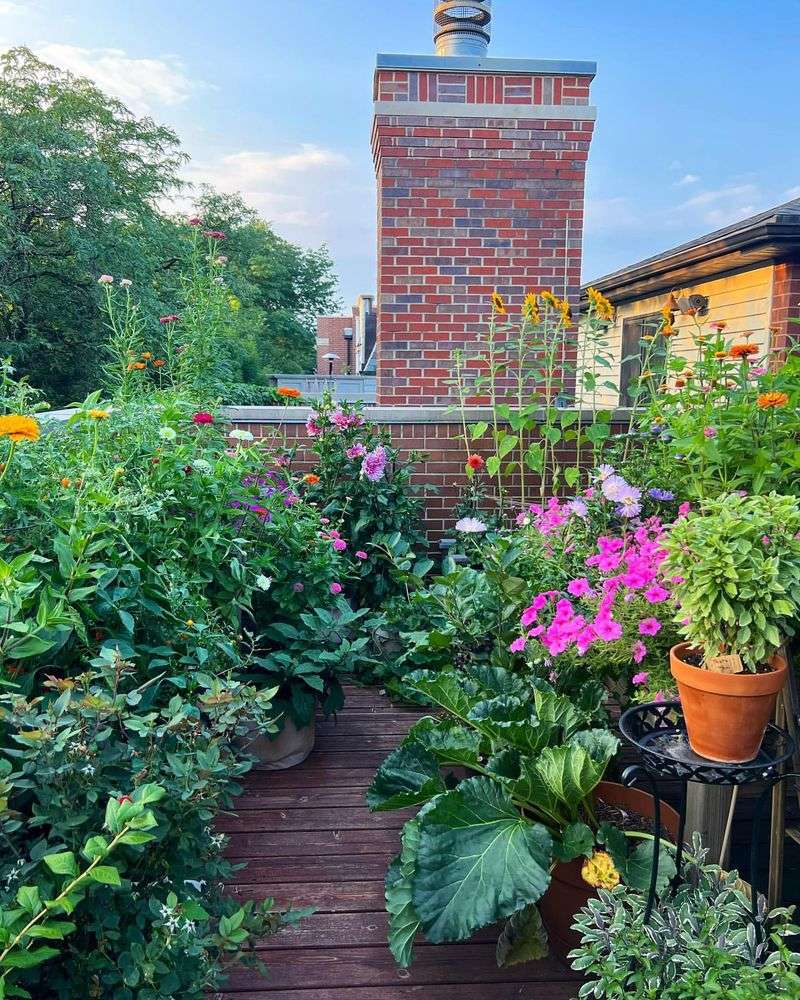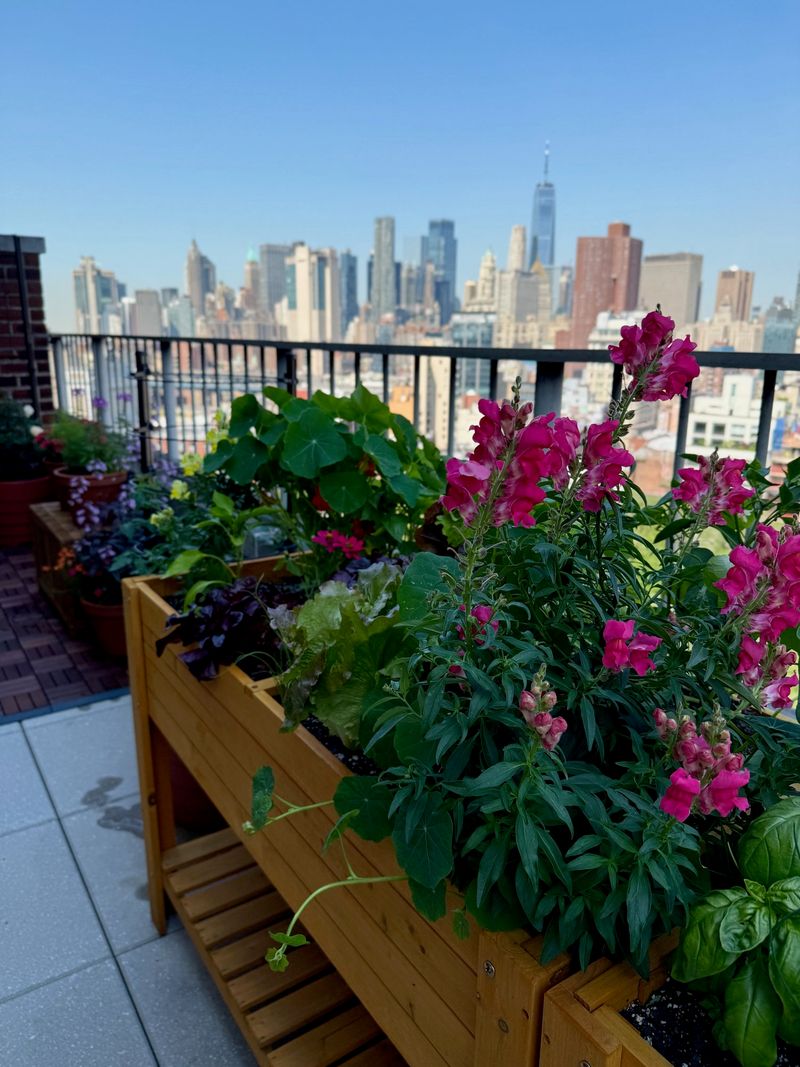Living in New York doesn’t mean giving up on your garden dreams—it just calls for a little creative thinking. Whether it’s a compact balcony, a rooftop nook, or even a fire escape (where it’s allowed), container gardening lets you bring greenery into tight spaces.
The mix of limited square footage, ever-changing light, and New York’s bold seasons makes plant choice essential. That’s where the magic of resilient perennials and easy-going annuals comes in—they’re built to thrive, even in the city’s quirks.
This guide features 12 tough-as-nails perennials that come back each year, plus 8 low-maintenance bloomers perfect for pots. With the right plants, your little patch of NYC can be a lush escape no matter the zip code.
1. Coral Bells (Heuchera)
These low-maintenance perennials offer stunning foliage in shades from purple to lime green, making them perfect for partly shaded NYC balconies. I’ve seen them thrive even on north-facing apartment ledges where sun is limited.
Hardy through New York winters, coral bells don’t mind being root-bound in containers. Their compact size (typically 12-16 inches) works well in tight spaces while providing year-round interest.
The plants produce delicate flower stalks in summer, but their colorful leaves are the real show. Mine survived three winters in a pot on my Queens balcony with minimal fussing.
2. Russian Sage (Perovskia atriplicifolia)
Russian sage brings a cloud of lavender-blue flowers to sunny spots from midsummer through fall. The silvery foliage stands up beautifully to hot, dry conditions – perfect for those south-facing fire escapes that bake in summer heat.
Growing to about 2-3 feet tall in containers, this drought-tolerant perennial needs good drainage and full sun. A neighbor’s rooftop garden in Brooklyn features several that have returned for years.
Cut back in late winter, and it’ll regrow vigorously each spring. The aromatic foliage deters pests naturally, an added bonus for urban gardens where you don’t want to use chemicals.
3. Ornamental Grasses (Pennisetum)
Movement and texture make ornamental grasses essential for windy NYC balconies and rooftops. Varieties like Purple Fountain Grass create dramatic height without taking up much floor space.
The graceful swaying in city breezes adds a dynamic element other plants can’t match. My Manhattan friend’s container of fountain grass survived three winters, protected slightly by building walls.
Most need just 6-8 hours of sun and moderate watering. The bonus? They look spectacular backlit by evening sun against brick buildings, creating natural privacy screens between neighboring outdoor spaces.
4. Sedum ‘Autumn Joy’
Succulents like ‘Autumn Joy’ sedum are practically bulletproof for busy New Yorkers. The fleshy leaves store water, meaning they forgive occasional neglect during summer getaways to the Hamptons.
Starting with green broccoli-like buds in summer, they transform to deep pink and eventually copper by fall. My building’s common rooftop garden has several that have returned for five straight years in the same containers.
Plant in well-draining soil and place in full sun. They’ll reward you with clusters of star-shaped flowers that attract butterflies, bringing wildlife to your urban oasis without any special care.
5. Dwarf Japanese Maple (Acer palmatum)
For a touch of elegance, dwarf Japanese maples create focal points in larger containers. The slow growth rate means they won’t outgrow your space quickly, while providing stunning fall color against Manhattan’s concrete backdrop.
Choose varieties like ‘Shaina’ or ‘Beni Kawa’ that stay under 6 feet tall. They prefer morning sun with afternoon shade, making them perfect for east-facing balconies that get intense morning light.
These trees need consistent moisture but good drainage. My Brooklyn Heights friend has kept one in a large ceramic pot for seven years, moving it to a protected corner during winter storms.
6. Coneflower (Echinacea)
Native to North America, coneflowers bring pollinator-friendly blooms to urban spaces. The daisy-like flowers with raised centers appear from June through September, providing months of color.
Newer varieties come in sunset hues beyond the traditional purple. They need at least 6 hours of sun daily and well-draining soil, making them perfect for those sunny spots on fire escapes or balconies.
Leave the seedheads standing through fall and winter – they’ll feed neighborhood birds and add winter interest. I’ve watched finches visit my Williamsburg balcony coneflowers repeatedly during cold months.
7. Hosta
Shade-loving hostas solve the problem of north-facing New York balconies where sun rarely reaches. Their sculptural leaves in variegated patterns brighten dim corners without needing direct sunlight.
Choose compact varieties like ‘Blue Mouse Ears’ that won’t outgrow containers. They prefer consistent moisture but can handle brief dry spells once established. The summer flower spikes attract hummingbirds that occasionally visit city gardens.
My neighbor’s collection thrives under the shadow of a water tower in Chelsea. During winter, the containers can be moved to a protected area or insulated with bubble wrap to prevent root damage.
8. Black-Eyed Susan (Rudbeckia)
Cheerful yellow blooms make black-eyed Susans perfect for bringing sunshine to urban spaces. These native wildflowers adapt well to container life and bloom prolifically from July through October.
Requiring at least 6 hours of sun daily, they’re perfect for south-facing spots. The compact ‘Little Goldstar’ variety grows just 14-16 inches tall, fitting perfectly in smaller containers while still producing dozens of flowers.
Deadhead spent blooms to encourage more flowers. My Lower East Side community garden has several in pots that have returned reliably for years, surviving winter with minimal protection.
9. Lavender (Lavandula angustifolia)
Growing lavender in New York containers brings Mediterranean charm and calming fragrance to urban spaces. English lavender varieties like ‘Munstead’ and ‘Hidcote’ are most container-friendly and winter-hardy for our climate.
Place in your sunniest spot with excellent drainage – add extra perlite to potting soil. The silvery foliage looks good year-round, while purple flower spikes appear in early summer, attracting bees and butterflies to your balcony.
Harvest stems for drying or cooking. My West Village window box lavender survived three winters, providing fresh sprigs for summer cocktails and year-round aromatherapy whenever I brushed against it.
10. Yarrow (Achillea millefolium)
Drought-tolerant yarrow brings butterfly-attracting flat flower clusters to sunny containers. Modern cultivars offer colors from soft pastels to vibrant reds, blooming from early summer through fall.
The fern-like foliage adds texture even when not in bloom. Most varieties stay under 2 feet tall in containers, making them manageable for balconies. They prefer full sun but tolerate some shade.
Try compact varieties like ‘Little Moonshine’ with silvery foliage and bright yellow flowers. After three years growing yarrow in my Brooklyn container garden, I’ve found it needs almost no supplemental water once established – perfect for forgetful urban gardeners.
11. Dianthus (Pinks)
Spicy-scented dianthus brings cottage garden charm to urban containers. The blue-green foliage forms neat mounds topped with frilly-edged flowers in shades from white to deep red, many with contrasting eye zones.
Most varieties stay under 12 inches tall, perfect for window boxes and railing planters. They need full sun and excellent drainage, thriving in the hot, dry conditions often found on NYC balconies and rooftops.
Look for varieties labeled “perennial” rather than “annual” for multi-year performance. My East Village friend’s dianthus has flowered reliably for four years in the same container, perfuming her fire escape with clove-like fragrance each summer.
12. Sempervivum (Hens And Chicks)
Nearly indestructible, sempervivums form rosettes that multiply without much intervention. These succulents come in surprising colors from green to purple to red, often changing hues with the seasons.
Perfect for shallow containers where other plants struggle, they need minimal soil depth. Their extreme drought tolerance means they’ll survive even if you forget to water during summer heat waves or weekend getaways.
Winter hardy to well below freezing, they need no special protection in NYC. My collection started with three plants on my Upper West Side window ledge and expanded to fill the container within two years – I’ve given “chicks” to neighbors throughout my building.
13. Nasturtium
Trailing nasturtiums cascade beautifully from hanging baskets and tall containers. The round leaves and bright flowers in sunset hues add tropical vibes to urban spaces from late spring until frost.
Both flowers and leaves are edible with a peppery taste – I add them to summer salads straight from my fire escape garden. They prefer full sun but tolerate partial shade, especially in hot afternoon spots.
Plant seeds directly in containers in spring after frost danger passes. These easy growers actually prefer poor soil – too much fertilizer produces lots of leaves but fewer flowers. In my experience, they self-seed reliably in NYC’s climate.
14. Sweet Alyssum
Honey-scented alyssum creates frothy clouds of tiny flowers that spill over container edges. The low-growing habit (just 3-5 inches tall) makes it perfect for pot edges and window boxes where it won’t block other plants.
White varieties like ‘Snow Princess’ bloom continuously from spring through fall without deadheading. They handle New York’s summer heat better than you might expect for such delicate-looking flowers.
Plant in spring for immediate blooms. My neighbor’s window boxes in Park Slope feature alyssum that reliably self-seeds each year, creating effortless cascades of fragrant flowers that attract beneficial insects to her urban mini-garden.
15. Calibrachoa (Million Bells)
Tiny petunia-like blooms cover calibrachoa plants from spring until frost. These vigorous annuals thrive in hanging baskets and window boxes where their trailing habit can shine.
Available in nearly every color imaginable, they’re more heat and rain tolerant than their petunia cousins. No deadheading needed – they self-clean and keep blooming through summer thunderstorms and humidity.
Water when the top inch of soil feels dry. My calibrachoa hanging basket on my Queens balcony survived last summer’s heat wave with morning watering and afternoon shade. For best results, use a container with excellent drainage.
16. Coleus
Forget flowers – coleus offers electric foliage in patterns and colors that seem almost painted by hand. Modern varieties thrive in both sun and shade, adapting to nearly any New York balcony or window box condition.
The plants grow quickly, filling containers with bold texture. Pinch growing tips regularly to encourage bushiness. Some varieties reach 2-3 feet tall, creating dramatic height in arrangements.
While technically perennials in tropical climates, treat them as annuals in New York. I’ve found cuttings root easily in water, letting me bring favorites indoors for winter before starting fresh outdoor containers each spring.
17. Cosmos
Daisy-like cosmos flowers dance above ferny foliage on slender stems. These easy-growing annuals add height and movement to container gardens, swaying gracefully in city breezes.
Dwarf varieties like ‘Sonata’ reach just 2 feet tall, making them container-appropriate. They bloom continuously from early summer until frost if you snip off spent flowers occasionally.
Sow seeds directly in containers after frost danger passes. My community garden plot in Washington Heights features self-seeding cosmos that return yearly with no effort, attracting butterflies and creating a meadow-like feel amid urban surroundings.
18. Snapdragons (Antirrhinum)
Vertical spikes of snapdragon flowers bring architectural interest to NYC container gardens. These cool-season bloomers perform best in spring and fall, often taking a break during summer’s most intense heat.
Dwarf varieties stay under 12 inches tall, perfect for window boxes. The range of colors from pastels to vibrant reds and yellows lets you coordinate with any color scheme.
Plant in early spring for best results. In my Hell’s Kitchen balcony garden, snapdragons that I planted in April continued flowering until December last year, taking only a brief pause during August’s hottest weeks before reblooming spectacularly in fall.
19. Begonia
Shade-tolerant begonias solve the problem of dim north-facing spaces where many flowering plants struggle. From traditional wax begonias to dramatic angel wing varieties, there’s one for every container situation.
The plants bloom continuously from spring through fall without deadheading. Many feature interesting foliage along with the flowers, providing multiple seasons of interest.
Water at soil level to prevent leaf spotting. My neighbor’s collection thrives in the shade of a water tower on her Tribeca rooftop, bringing color to a spot where sun-loving plants would fail. Some tuberous varieties can be overwintered indoors.
20. Marigold (Tagetes)
Bright and cheerful marigolds bring reliable color to sunny NYC containers. Their distinctive scent naturally repels many garden pests, making them helpful companions for other container plants.
French marigolds stay compact at 6-12 inches tall, while African varieties can reach 2-3 feet. The gold, orange, and russet blooms complement fall decorations and continue flowering until hard frost.
Plant after danger of frost has passed. My fire escape garden in Inwood features marigolds that bloom non-stop from Memorial Day through Thanksgiving with minimal care, brightening my kitchen window view for months.


